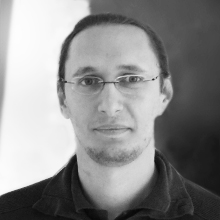As you know, between his passion for shaping the best and the most innovative software solutions, Juan Diego (JD as we all know him) really enjoys spending time learning new things. Now, he is interested in sharing with all of us and his blog’s community a thought that arose when he was in the middle of a new reading.
I’m halfway through reading Algorithms to Live By, by Brian Christian and Tom Griffiths. The book is really good – but this is not a review about the book — rather, a thought that came to my mind while reading it.
I think that books (and other pieces of knowledge) like these are what are going to fulfill Kurzweil’s predictions on the future of humanity.
I know that’s rather strong phrasing, but let’s start with the basics.
The book
The book covers in a basic level of detail various aspects of computer science and how those could be applied to daily life. Algorithm analysis, scheduling theory, caching, sorting – all that nerdy stuff and how it can be applied to day-to-day activities. My favorite chapter so far is the one about early stopping strategies and when to stop looking for someone to hire. This is probably because I spend a lot of time on that particular problem.
The extra step
In several cases, the book will present optimized strategies to solve particular problems, and a bit of theory on why a particular strategy is the best. Sometimes a strategy doesn’t guarantee that the best scenario will be achieved, but rather maximizes the possibilities of it happening. This is the approach that we should take as rational beings. Maximizing our chances of greater success, minimizing our costs.
Yet, naturally, most of us don’t use those strategies. Time and time again the book compares what we commonly do in real life with what the best strategy would have been. In one of these particular tangents, the book tells about the curious case of Donald Knuth and how he checks his emails every 3 months.
The contrast of the regular person checking their email every 10 minutes and Mr. Knuth doing so every 3 months generated in me a feeling of separation. “He is so clear on his priorities and his schedule; he’s closer to a well-adjusted machine than a human.”
And now you might see where I’m going with this.
Diving into that thought…
That particular thought had less to do with Knuth himself than our general sensation of what is “natural” and “artificial” in our behavior. And being as precise as possible, rational and always using the optimal strategy is not natural. It’s not inherently human.
And yet, here we are as a species, discussing algorithms, marketing strategies, business plans, clinical trials, scientific methods… all of which we can consider technology. Technology that has shaped our lives as a species and our lives individually, in every moment.
What about transhumanism?
Let’s take a peek at the definition of transhumanism:
The belief or theory that the human race can evolve beyond its current physical and mental limitations, especially by means of science and technology.
This is exactly what we’ve been discussing. Technology has already expanded our limitations, and it keeps doing so. A fancy futuristic word like transhumanism has become a daily reality.
…just like Kurzweil predicted.
In all fairness, I know that when people talk about transhumanism today, they talk about the next steps. Biological cyborgs, heavy body alteration, consciousness melding and all that – but I’ll use that term in the broadest sense.
Kurzweil’s predictions
Raymond Kurzweil, in his book The Age of Spiritual Machines, gave some predictions about how he expected technology to affect humanity in the short and long term. Mind you, I read the 2000 edition in 2016 and he nailed those 6 years with a precision of months. I could sum up his book in a few simple questions and answers:
- Will the future be very different, very sci-fi like? Yes, it will.
- Will we get used to it? Yes, we will.
- How will we do that? Des.. pa… cito… 🎵 (slowly)
He predicted that as technology changed, and we adopt it into our daily lives, our values and view of technology itself will meld with it. It’s completely normal for us today to think about TVs or computer screens as part of our day-to-day existence, but 300 years ago someone had barely figured out to take an impression of an image without manually drawing it. 300 years is not that long ago, really, maybe 6 or 7 generations ago.
As new technologies enters our lives, we’ll immediately see them as normal and not question many of them anymore. Every new technology, every new step towards human “optimization” is another step on that never-ending road.
In his view, transhumanist beliefs are right, and historians will one day look back and say “huh, it wasn’t as difficult as we all imagined before”.
Back to the book
Later, I will probably write a more descriptive review of the book, but one thing’s for certain: it should be a bit more known. Having optimal strategies to deal with everyday scenarios is a huge improvement in our daily lives. We don’t usually think of “strategies” as technology, but it is indeed the application of research and science. The content of this book could easily become one of those “productivity tips”, so famous that it changes entire industries and how we behave in them.
And at that point, we’re taking one step further along the road to transhumanism.
